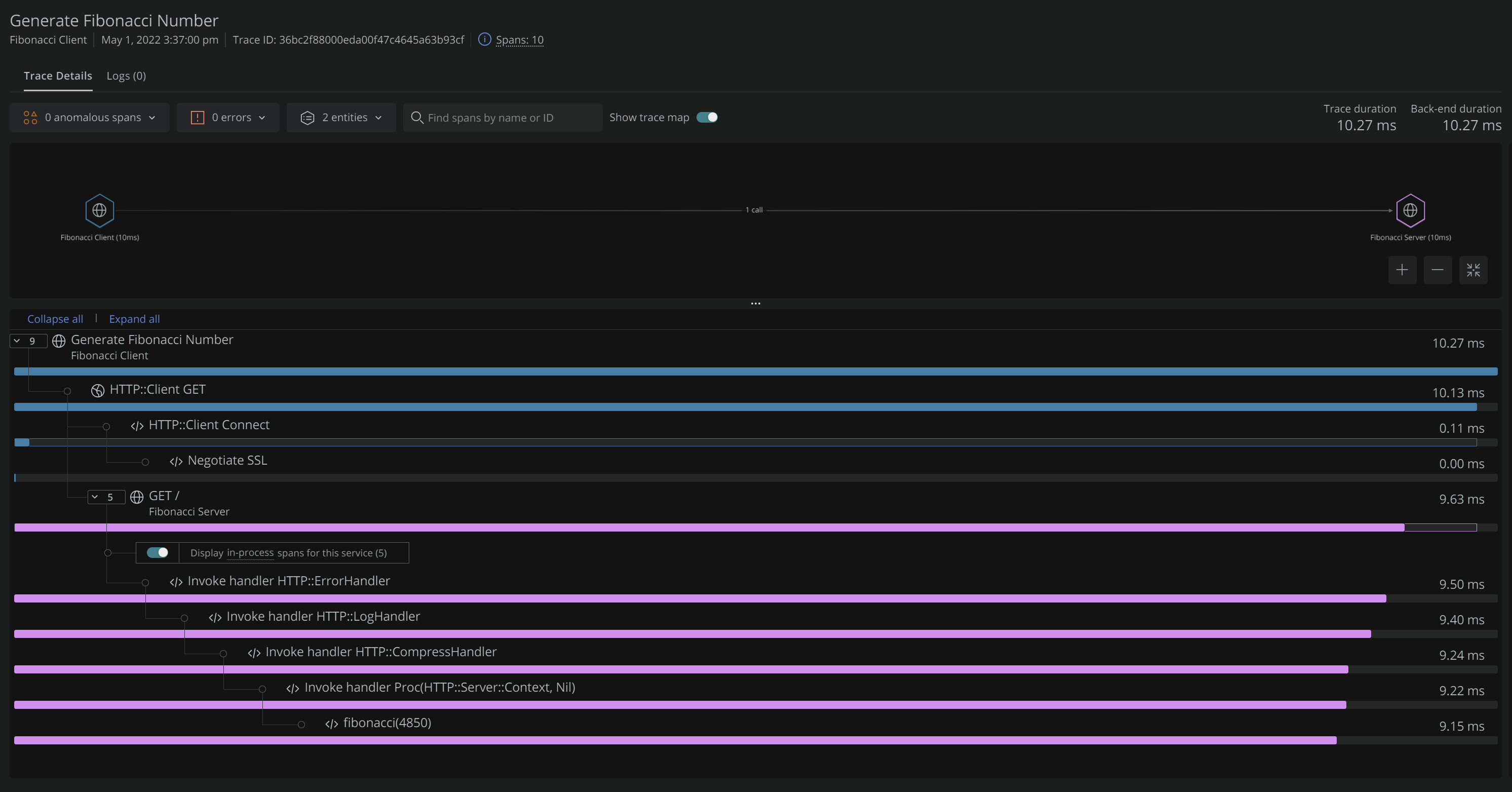Releases: wyhaines/opentelemetry-instrumentation.cr
Improved docs, GC support, and small improvements
This release has much-improved documentation, as well as the introduction of a GC instrument that creates a span every 5 minutes with the current state of the GC. This can be used to graph memory utilization and behavior over time, as well as alerting on the same. There were also a few small tweaks to the codebase.
HTTP::WebSocket
HTTP::WebSocket instrumentation. It seems to do what is needed, but I would love feedback from people who are using WebSocket to see if there is anything that can be improved.
Wee Bugfixes
This release eliminates some diagnostic puts statements that I forgot to remove, and fixes an expectation on the return result from an HTTP::Client#exec call. Thanks to @caspiano for fixing these!
HTTP::Client instrumentation & Distributed Tracing
Error handling in HTTP::Server
There are a few small changes in this release, but the biggest is that error spans are properly flagged as such by HTTP::Server.
Spider Gazelle and a LogBackend
This release includes autoinstrumentation for Spider-Gazelle, and it also adds a LogBackend that one could use instead of enabling Log auto-instrumentation.
Enable Tracer at the top level require
Added a require for Tracer at the top level, to ensure that it is available without users having to specifically require it.
Lucky Framework Instrumentation!
This release adds a little autoinstrumentation specificially for the Lucky framework, and it improves the documentation a small amount.
Improve how spans look
This release mostly improves how the spans look, and ensures that spans work right when dealing with a server that uses keepalive.
Initial Release
This is the initial release of the opentelemetry instrumentation, designed to work with https://github.com/wyhaines/opentelemetry-api.cr to make it easy to instrument your Crystal apps with OpenTelemetry.
The autoinstrumentation should only install if the packages that it is supposed to instrument are installed, at the required versions.
Further testing is needed, but earlier tests seemed to work as expected with New Relic.
